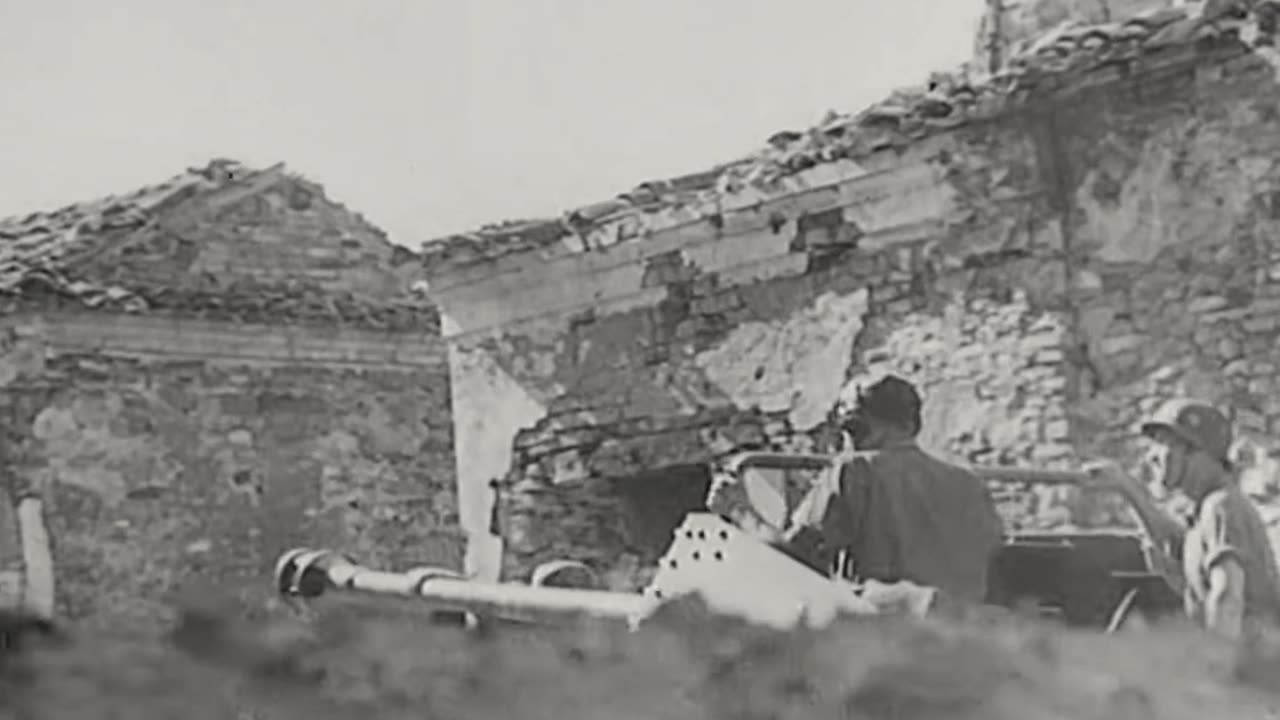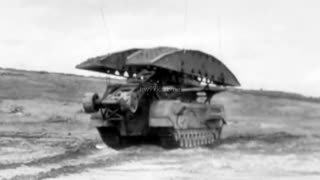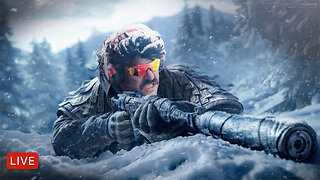Premium Only Content

Marder III Ausf. M tank destroyer emerges from its lair to engage Allied forces in Italy in 1944
Marder III was the name for a series of World War II German tank destroyers mounting either a modified ex-Soviet 76.2 mm F-22 Model 1936 field gun, or a 7.5cm PaK 40, in an open-topped fighting compartment on top of the chassis of the Czechoslovakian Panzer 38(t). The vehicle offered little in the way of crew protection but had sufficient firepower to take out virtually any Allied tank at the time it was introduced. They were in production from 1942 to 1944, and served on all fronts until the end of the war.
The last Marder III variant was based on the Geschützwagen 38(t) Ausf. M, a purpose-designed vehicle for self-propelled gun use, again armed with the 7.5cm PaK 40 anti-tank gun. This final variant was a significant improvement over previous models, with its lower silhouette, sloped armor, and much more functional fighting compartment. The engine was moved from the rear to the middle between driver and the rest of the crew. Because there was no engine in the rear, the gun and the crew did not have to sit on top of the engine deck as in previous models. The fighting compartment could be lowered down to the bottom floor level where the engine used to be, which decreased crew exposure and visibility.
Unlike the previous two Marder III variants, the fighting compartment was closed at the rear, protecting the crew up to their midsection. It stayed open-topped. The machine gun port at the front was eliminated in the Ausf. M in favor of an MG 34 or MG 42 carried by the crew. In the previous two models, the commander served as a gunner. However, in the Ausf. M, the radio man moved to the rear, with the commander and gunner, to serve as a loader. Only 27 rounds of 7.5cm ammunition were carried, but combat effectiveness increased because the vehicle commander was freed from manning the gun.
In the footage the vehicle is seen to be hidden from observation in order to avoid being targeted by aircraft or artillery, and at 0:07 care is take to obscure the track marks that would be visible from the air. As Allied forces approach it leaves cover in order to engage the enemy. The Pak 40 was a powerful weapon against armor and could penetrate a Sherman tank frontally from 1000 meters range, and over double that distance from the sides and rear.
-
 2:20
2:20
hw97karbine
20 days agoChurchill tank bridgelayer variant in action
721 -
 1:20:26
1:20:26
Kim Iversen
4 hours agoThis Intel Analyst Has Accurately Predicted Putin's Every Move... Is War With NATO Next?
98.7K31 -
 LIVE
LIVE
SpartakusLIVE
1 hour ago#1 HERO of the PEOPLE || Ending the Week with FUN, WINS, and LAUGHS
116 watching -
 LIVE
LIVE
GritsGG
11 hours agoQuad Win Streaks!🫡 Most Wins in WORLD! 3600+
102 watching -
 2:34:12
2:34:12
Spartan
3 hours agoScrims vs Mindfreak and then Ranked or another game idk
4.72K1 -
 1:35:57
1:35:57
Roseanne Barr
5 hours agoEnd-Time Prophecies REVEALED: Jonathan Cahn’s Warning
142K54 -
 1:08:58
1:08:58
vivafrei
7 hours agoComey INDICTED! Proof Jan. 6 was a FED-SURRECTION! Ostrich Crisis Getting More Attention & MORE!
153K102 -
 LIVE
LIVE
StevieTLIVE
2 hours agoBirthday Bash HYPE Warzone Wins ALL NIGHT
15 watching -
 6:30:53
6:30:53
Dr Disrespect
9 hours ago🔴LIVE - DR DISRESPECT - ARENA BREAKOUT: INFINITE - STORM EVENT
181K9 -
 3:35:23
3:35:23
Barry Cunningham
9 hours agoPRESIDENT TRUMP SPEAKS ON JAMES COMEY INDICTMENT! MORE TO COME! DELICIOUS LIBERAL MELTDOWNS!
79.3K45